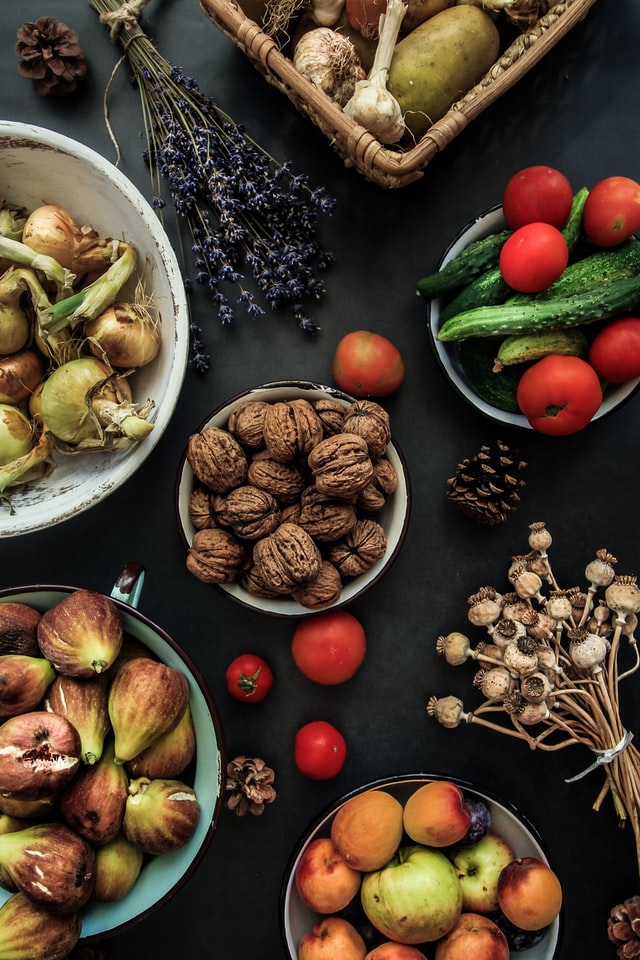Not, All Calories Are Created Equal?
Chef K.T. Murphy
In this article information on Not, “All Calories Are Created Equal?” will be provided. Interestingly, the calories your body takes in may not be the same as the calories your body uses. A 2500 calorie per day diet may cause some people to gain weight, while a 2500 calorie per day diet consisting of different foods may cause no weight gain or even a weight loss. It all depends on how the calories are counted and on how your body digests those calories.
How Calorie Count Is Measured
Calories are the units of energy we use every day to measure the food intake we eat. One calorie is the amount of energy necessary to raise the temperature of one gram of water by one degree Celsius at normal atmospheric pressure.

Calories In Food
When we talk about calories in food, we are actually talking about kilocalories. One scientific kilocalorie is equal to a thousand calories. When talking about food, one calorie is actually a kilocalorie.
Manufacturers of different types of food are measured using what is called a “bomb calorimeter.” The food is placed in a sealed container that is also filled with water at normal atmospheric pressure. Electrical energy is used to burn the food. When it is burned completely, the temperature of the water is measured and a calculation is made as to how many calories are in that food.
How The Body Uses Calories
The problem with the bomb calorimeter is that it measures every available calorie the food contains and, in our diets, we don’t always use up every available calorie.
Take fiber, for example. Fiber can be burned in a bomb calorimeter and its calories are measured as part of the total amount of calories in a specific food. In the gut, however, fiber is not digested (especially insoluble fiber) and it instead passes through the body to make up the bulky portion of stool. This means that the calories you ate from fiber aren’t absorbed and you are actually consuming fewer calories than you’d expect. This is a good reason to eat high fiber foods.
The Atwater System
Another method of determining calories is called the Atwater system. In this system, the calories are broken down into the number of calories in the protein, fat, carbohydrates, and alcohol in each food. There are reference tables based on the energy density of the food. For protein, there are 4 kilocalories in each gram of protein. There are also 4 kilocalories in each gram of carbohydrate. Organic acids contain 3 kilocalories per gram and fats contain 9 kilocalories per gram. If you drink alcohol, it takes up 7 kilocalories per gram of alcohol. The food is broken down into the amount of each of these components and the calorie count is added up.
Neither Method Is Truly Accurate
Neither method is a true measure of the digestibility of food and the degree of absorption of the digested products. The truth is that the food those calories come from greatly determines how they are processed in the body.
Calories are NOT created equal as the exact same amount of calories from two different types of food can pose completely different biological effects in the body.
Soda Versus Mushrooms: A Case Study
Is 182 calories worth of soda the same as 182 calories worth of mushrooms? Let us see.
The Soda
A 22-ounce serving of soda has 44 grams of sugar, 182 calories and nothing else. The stomach quickly absorbs the sugar causing a spike in blood glucose levels and a variety of bad chemical reactions in the body, including, but not limited to increases in storage of belly fat, increases in bad cholesterol and blood pressure, and may even contribute to infertility in women.

The flood of insulin also blocks leptin, the hormone that controls appetite. As people become more resistant to leptin, they never register satiation, and this leads to overeating, out of control cravings and adds fuel to the sugar addiction fire. This domino effect leads to bad eating habits, and cravings for sugar that will never truly get satisfied.
Additionally, the fructose in the soda does not send a signal to the brain that the body just received calories, so they are not registered as food, and this means that it will also effect ghrelin, the appetite hormone that is reduced when the body receives real food, leading to more hunger, more cravings, and over eating.
The Mushrooms
Mushrooms are also carbohydrates, but instead of being simple sugars like the soda, they are complex carbs that digest slowly in the body. They will not cause blood sugar spikes, but instead be digested slowly and they provide essential nutrients, like potassium, fiber, protein, iron, vitamin D, and magnesium, healing the body instead of causing immense harm.

The quality nutritional profile of the mushrooms supports numerous healthy results in the body, and also helps protect against chronic disease, including various cancers and heart disease.
The nutritional profile, slow digestion, and fiber found in mushrooms allow you to feel full and satisfied, eliminating out of control cravings and over eating. Will mushrooms contribute to weight gain? NO WAY!
The difference between the calories in soda and mushrooms is marked. In fact, as opposed to the soda that is all harmful, there is not one thing in mushrooms that is.
One study that looked at the correlation of sugar and calories to risk of diabetes found that simply adding 150 calories a day to a diet barely raised the risk for diabetes, however when those calories were from soda the risk increased by 700%.
The Volume Is Impressive Too
By the way, 186 calories worth of mushrooms is almost 9 cups, which is a lot of mushrooms, especially in comparison to the 22 ounces of soda.
Now, most people will not consume 9 cups of mushrooms in one sitting (mainly because they are so filling), but think about how much more food you can actually eat when choosing quality food?
What Does This Mean For Eating And Counting Calories?
Eat slow digesting foods and skip the simple sugars!
Eat real whole food!
Very Little Or No count
Look at food labels for foods that contain a high amount of fiber. Plant foods naturally contain a great deal of indigestible fiber that will bulk up the stool and won’t be counted as “real” calories because they are not digested or absorbed in the body. Vegetables are always your best choices, as are low sugar fruits like berries.
More Count
Meats, proteins, and other low fiber foods are more fully digested and absorbed, so those foods will count more than vegetables.
Highest Count
Empty calorie foods, like cake, donuts, cookies, potato chips, soda and other junky foods are your worst choices that will do nothing good for your body and will cause serious harm.
Stock up on high fiber real food for your health!
Tags: All Calories Are Created Equal?, Calories, Calories In Food, Chef K.T. Murphy, Highest Count, How Calorie Count Is Measured, How The Body Uses Calories, Neither Method Is Truly Accurate, Not, The Atwater System, The Mushrooms, The Soda, The Volume Is Impressive Too, Very Little Or No count, What Does This Mean For Eating And Counting Calories?
